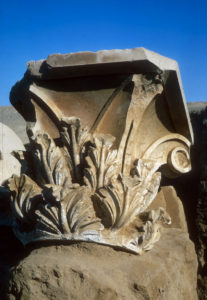Seleucid Power and its Visual Identity

This project investigates the monumental architecture of the Seleucid kings mainly in the eastern part of their empire. Aspects of this topic have been treated in several earlier studies. E. Will, for example, considered that the monuments of Palmyra, and especially the temple of Bêl, were inspired by those of the Seleucid kings and may be used to reconstruct the characteristics of Seleucid architecture. More recently, W. Held focused on religious Seleucid buildings. He showed that the architects employed by the kings created several types of temples that were variously inspired by models from Mesopotamia and the Iranian world. His conclusions join and expand those of M.P. Canepa —who has shown that Seleucid kings, like their Achaemenid predecessors, were able to design an imperial religious architecture that combined elements originating in different parts of their empire— and S. Downey, who developed a comparable approach since the 1980s.
Earlier research does not account for all types of Seleucid architecture. Nor does it succeed in offering any overall understanding of the different traditions at play in the creation of Seleucid monumental architectural identity. The limited number of buildings whose creation can be securely attributed to Seleucid kings is a major obstacle to such an investigation. This project attempts to overcome the latter obstacle by also taking into account monuments built by contemporary non-Seleucid kings, but arguably imitating Seleucid models, along the periphery of the Seleucid Empire.
My objective is to develop an approach that encompasses all the categories of relevant monuments, concentrating on the territories of Bactria (Ai Khanoum), Parthia (Nisa) and Syria. The first step will be to identify these royal monuments and highlight their architectural characteristics. As a next step, the inquiry will try to distinguish among 'regional' and 'universal' features. The aim is to determine whether Seleucid monumental architectural identity was the same throughout the empire or varied according to different regions or categories of monuments, and whether the architectural achievements of the vassal kings affirmed a specificity of their own. We will thus also be able to measure the impact of Seleucid architecture on that of the neighboring territories.
